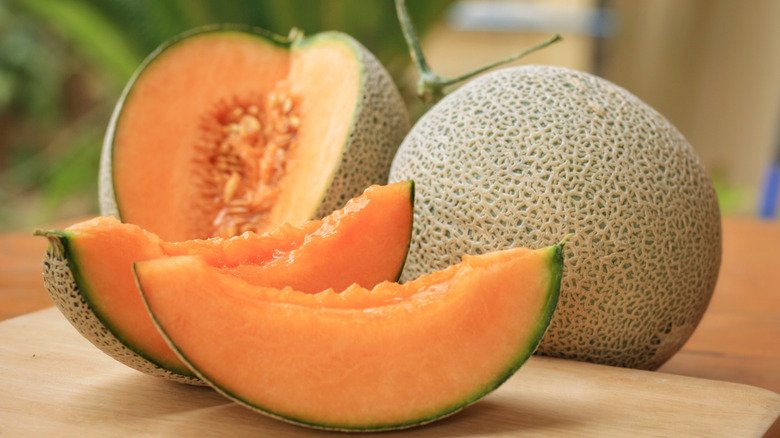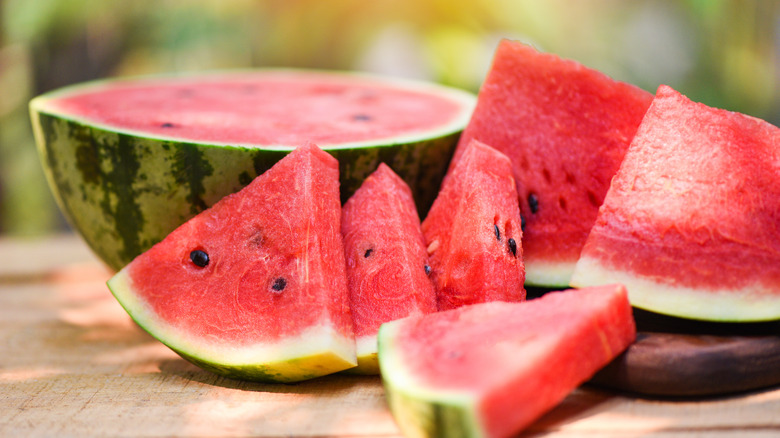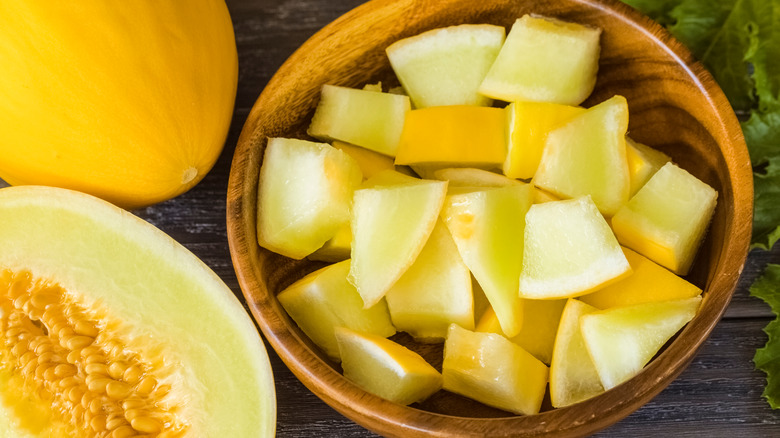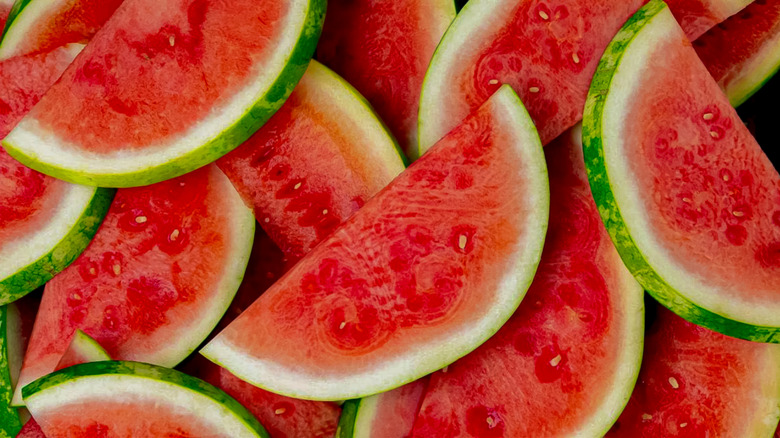The Melon Refrigeration Rule You Should Never Break
We don't know about you, but we store a lot (if not all) of our produce in the fridge. Lettuce, carrots, apricots, zucchinis, you name it, we're probably keeping it in the icebox. That seems like the correct way to store fruits and veggies to prevent them from going bad, and for the most part, it is the best way to keep your produce fresh and crisp for longer, but there are a few exceptions to the "refrigerate produce" rule.
For starters, we knew that bananas, avocados, and tomatoes are probably best left out, but we didn't realize berries fell into that group as well. According to Delish, berries will stay fresh at room temperature, and refrigerator moisture might possibly ruin them. Also, it's best to only wash them immediately before you eat; otherwise, the moisture will soften the fruits.
Another fruit that is best to leave unrefrigerated is melons, though this one is a little more specific.
Whole melons should be left out at room temperature
Delish writes that whole melons should be left out at room temperature in order to allow them to ripen. It's only once they're sliced that they should be stored in the refrigerator. Food Network comments on this as well, writing that research from the United States Department of Agriculture "found that storage at room temp might even help keep the antioxidants more intact."
CBS News reported more in-depth on the study done by the USDA, which found that lycopene and beta carotene (natural antioxidants with numerous health benefits) increased in watermelons that were left out at room temperature, whereas the levels of these nutrients did not change in the fruit that was refrigerated. Get more health and nutrition benefits from your melon by leaving it out for a little while on the counter to ripen, and then store it in the fridge for a few days (three to four) once you've sliced it.
The best ways to keep your melons refrigerated
While there are benefits to leaving your melon out at room temperature, you probably don't want to leave chunks of watermelon or cantaloupe out on your kitchen counter for obvious hygienic reasons. Keeping pieces of melon in the fridge is no doubt a great way to keep them fresher for longer. But is storing your melon as easy as throwing the chunks in a plastic container and tossing them in the fridge?
According to MasterClass, if you're planning to use some of your melon one day and save the rest for later, it's important that you don't remove the seeds. They will help extend the melon's shelf life. If you're cutting the melon into slices, it's recommended to cover the slices in plastic wrap or store them in an airtight plastic bag. For cubed melon, you can use a plastic container, but you should lay a paper towel down inside the container first and give the melons some space to help prevent the build-up of moisture.
If you want to store melon for more than a few days, The Kitchn recommends doing so in the freezer. To do this, lay the cubes or slices on a baking sheet and freeze until solid before storing the pieces in a plastic bag. This lets the fruit remain usable for up to six months.
When it's time to throw out your melon
Like all good things, a hunk of juicy watermelon or cantaloupe can't exactly last forever. You can do your best to extend their shelf life, but you also have to be aware of the signs that it may be time to chuck those melons into the trash.
According to CookingChew, it's possible your melon might be past its prime before you even cut into it. Look for signs like cracks along the rind or large dark blotches known as "molds." If there's a "tangy or sour" smell to it, chances are the inside of the fruit has gone bad. In the event that you've already cut your melon, check on the pieces as they sit in the fridge. If the seeds are beginning to move or fall off and the flesh seems to be withering or getting a "slimy" texture, it's probably time to toss it.
Just because a melon may be near the end of its shelf life doesn't exactly mean it's not usable anymore. MyRecipes, for example, suggests that you can "pickle" the rind (provided the rind is not moldy, of course) for a cross between a tangy pickle and sweet melon. You can also place the melon slices on the grill with a few spices, use it to make a refreshing drink, or even turn it into a cold gazpacho.



